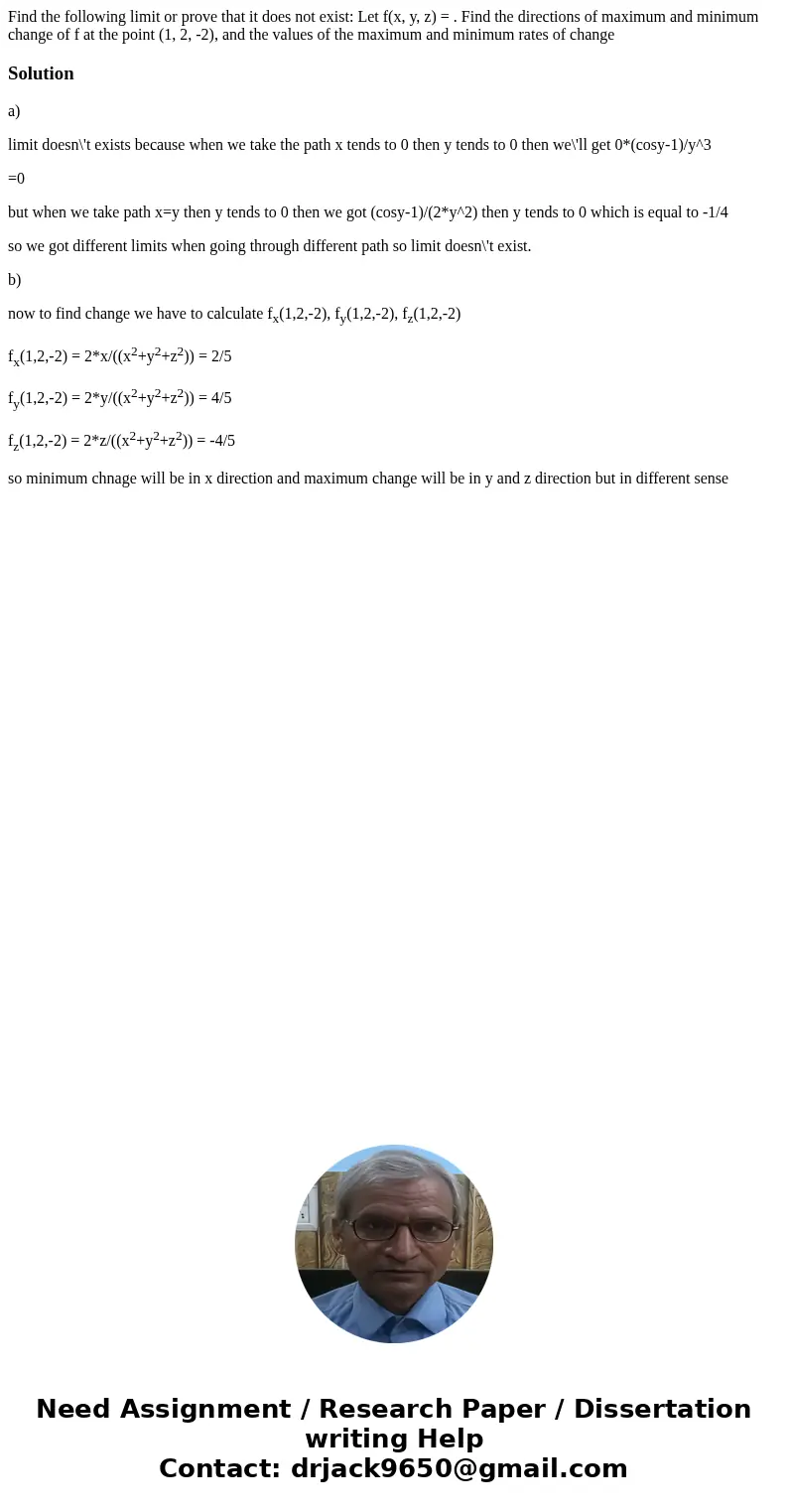Find the following limit or prove that it does not exist Let
Find the following limit or prove that it does not exist: Let f(x, y, z) = . Find the directions of maximum and minimum change of f at the point (1, 2, -2), and the values of the maximum and minimum rates of change
Solution
a)
limit doesn\'t exists because when we take the path x tends to 0 then y tends to 0 then we\'ll get 0*(cosy-1)/y^3
=0
but when we take path x=y then y tends to 0 then we got (cosy-1)/(2*y^2) then y tends to 0 which is equal to -1/4
so we got different limits when going through different path so limit doesn\'t exist.
b)
now to find change we have to calculate fx(1,2,-2), fy(1,2,-2), fz(1,2,-2)
fx(1,2,-2) = 2*x/((x2+y2+z2)) = 2/5
fy(1,2,-2) = 2*y/((x2+y2+z2)) = 4/5
fz(1,2,-2) = 2*z/((x2+y2+z2)) = -4/5
so minimum chnage will be in x direction and maximum change will be in y and z direction but in different sense

 Homework Sourse
Homework Sourse